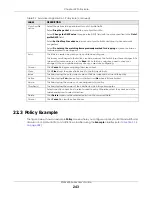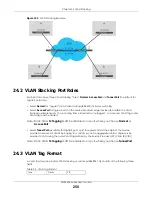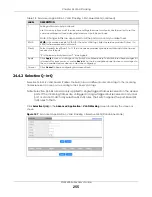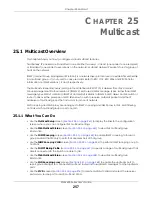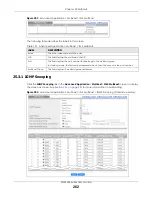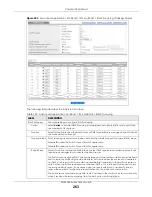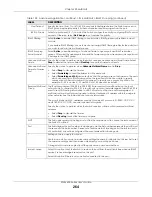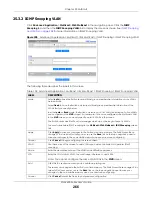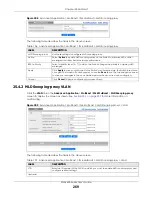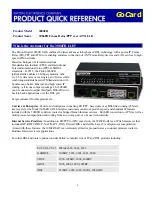
Chapter 25 Multicast
XGS4600 Series User’s Guide
257
C
HAPTER
25
Multicast
25.1 Multicast Overview
This chapter shows you how to configure various multicast features.
Traditionally, IP packets are transmitted in one of either two ways
–
Unicast (one sender to one recipient)
or Broadcast (one sender to everybody on the network). Multicast delivers IP packets to just a group of
hosts on the network.
IGMP (Internet Group Management Protocol) is a network-layer protocol used to establish membership
in a multicast group
–
it is not used to carry user data. Refer to RFC 1112, RFC 2236 and RFC 3376 for
information on IGMP versions 1, 2 and 3 respectively.
The Multicast Listener Discovery (MLD) protocol (defined in RFC 2710) is derived from IPv4's Internet
Group Management Protocol version 2 (IGMPv2). MLD uses ICMPv6 message types, rather than IGMP
message types. MLDv1 is similar to IGMPv2 and MLDv2 is similar to IGMPv3. MLD allows an IPv6 switch or
router to discover the presence of MLD listeners who wish to receive multicast packets and the IP
addresses of multicast groups the hosts want to join on its network.
MLD snooping and MLD proxy are analogous to IGMP snooping and IGMP proxy in IPv4. MLD filtering
controls which multicast groups a port can join.
25.1.1 What You Can Do
• Use the
Multicast Setup
screen (
) to display the links to the configuration
screens where you can configure IPv4 multicast settings.
• Use the
IPv4 Multicast Status
screen (
) to view IPv4 multicast group
information.
• Use the
IGMP Snooping
screen (
) to enable IGMP snooping to forward
group multicast traffic only to ports that are members of that group.
• Use the
IGMP Snooping VLAN
screen (
) to perform IGMP snooping on up to
16 VLANs.
• Use the
IGMP Filtering Profile
(
) to specify a range of multicast groups that
clients connected to the Switch are able to join.
• Use the
IPv6 Multicast Status
screen (
) to view IPv6 multicast group
information.
• Use the
MLD Snooping-proxy
screen (
) to enable the upstream port to
report group changes to a connected multicast router and forward MLD messages to other upstream
ports.
• Use the
MVR
screens (
) to create multicast VLANs and select the receiver
ports and a source port for each multicast VLAN.

